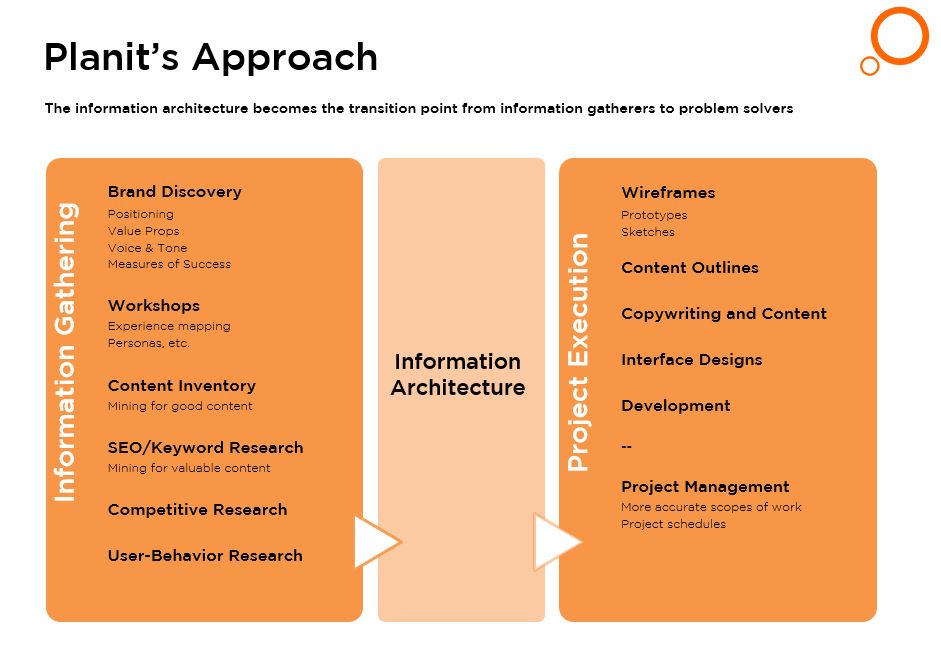How to Create Inspiring Information Architecture that Drives Success

I recently had the opportunity to host a webinar with GatherContent about information architecture (IA): Context-Based IA: Information architecture that drives project success and inspires your teams. In case you missed it, here are some of the highlights.
If you’re not familiar with information architecture, it’s the most important document in the web-development process.
The cumulative result of lengthy brand discoveries, audience research, and content audits, the IA is a major milestone—transitioning teams from mere information gatherers to professional problem solvers. That’s why the IA presentation for clients should be more than a sad piece of paper with gray boxes and lines—it should be triumphant.
The webinar introduced attendees to context-driven information architecture—an easy-to-adopt approach that presents not only the proposed site structure, but the logic and vision behind it.
In order for the IA to become an inspiring deliverable, you must ask yourself these questions:
- How does a page or section communicate your client’s brand?
- How does a page or section fulfill the needs of a site visitor?
- How does a page or section help meet business goals?
The IA can have a greater heartbeat if it’s actually infused into the bones of the website. Planit’s approach puts the IA as the transition point from information gatherers to problem solvers.

The IA drives the project by providing the rationale for which pages to create, content outlines, copywriting and content, interface designs, development, and project management.
To make the IA inspiring, spend more time thinking about the creative application of IA and not just reserving that for the writers and designers of the world.
And, when explaining the IA to your clients, it’s critical to put it into context. Sharing quotes from interviews and branding documents, SEO insights, competitor references, and other insights all help to add context. Also, by providing content considerations on each page, people will understand the need for each page.
Once it’s approved, this context becomes a guide for further creative exploration. In the end, content and development teams create triumphant work built upon the bones of an inspired information architecture, and that’s the ultimate goal.
Contact us if you’d like to learn more about how the Planit digital strategy team can help you improve your website.